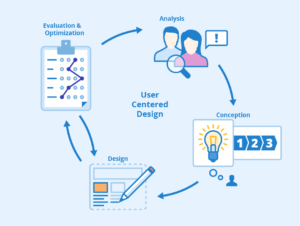In a Sea of Signals, Is Your On-Page SEO On-Point

In a Sea of Signals, Is Your On-Page SEO On-Point
Introduction
In the vast ocean of digital content, where countless websites are competing for attention, on-page SEO plays a pivotal role in determining your website’s visibility and search engine rankings. It’s not just about creating excellent content; it’s about optimizing it to make sure search engines can understand and appreciate its value. In this blog post, we’ll dive deep into the world of on-page SEO and explore why it’s crucial to ensure your on-page optimization is on-point.
Understanding On-Page SEO
On-page SEO refers to the practice of optimizing individual web pages to improve their search engine rankings and attract organic traffic. It encompasses a wide range of factors, both visible and invisible to users, that collectively signal to search engines the relevance, quality, and authority of your content.
Here are some key elements of SEO:
- High-Quality Content: Content is the heart of on-page SEO. It should be valuable, informative, and relevant to your target audience. High-quality content is more likely to engage users and earn backlinks.
- Keyword Optimization: Effective keyword research and strategic placement of keywords throughout your content are essential. This helps search engines understand the topic of your content and match it with user queries.
- Title Tags: Your page’s title tag is a critical on-page element. It should be concise, include relevant keywords, and entice users to click through to your page from search results.
- Meta Descriptions: These brief summaries in search results should be engaging and provide a clear preview of what users can expect when they click on your page.
- Header Tags: Proper use of header tags helps organize your content and signals the hierarchy of information to search engines.
- Internal Linking: Linking to other relevant pages within your website not only aids navigation but also distributes link equity and enhances the user experience.
- Images and Alt Tags: Image optimization involves using descriptive alt text and properly compressing images for faster loading times.
- URL Structure: A clean, user-friendly URL structure that includes keywords can improve click-through rates and rankings.
- Mobile-Friendly Design: With mobile users on the rise, ensuring your site is responsive and mobile-friendly is vital for both user experience and SEO.
The Importance of On-Page SEO
Now that we understand what on-page SEO entails, let’s explore why it’s so crucial:
- Visibility and Rankings: Effective on-page optimization is the foundation for achieving high search engine rankings. Without it, your website may not even appear in search results for relevant queries.
- User Experience: On-page SEO isn’t just about appeasing search engines; it’s about creating a better user experience. A well-optimized page is easy to navigate, loads quickly, and provides valuable content.
- Relevance: On-page optimization ensures that your content is relevant to the keywords and topics you’re targeting. This relevance is a key factor in search engine algorithms.
- Competitive Advantage: In a competitive online landscape, on-page SEO can give you an edge. It helps you stand out from the competition and capture the attention of your target audience.
- Conversion Rate: Properly optimized pages often have higher conversion rates because they deliver the information users are looking for in a clear and organized manner.
Best Practices for On-Page SEO
To ensure your on-page SEO is on-point, here are some best practices to follow:
- Conduct thorough keyword research to identify target keywords.
- Create high-quality, valuable content that satisfies user intent.
- Use keywords naturally and strategically within your content.
- Optimize title tags, meta descriptions, and header tags.
- Ensure your website is mobile-friendly and loads quickly.
- Include internal links to relevant pages within your site.
- Use descriptive alt tags for images.
- Keep your URL structure clean and user-friendly.
- Regularly update and refresh your content to keep it current and valuable.
Conclusion
In a digital landscape inundated with content, your on-page SEO can make or break your website’s visibility and success. By focusing on creating high-quality content and optimizing it effectively, you can not only improve your search engine rankings but also provide a better experience for your users. In a sea of signals, let your on-page optimization be the beacon that guides both search engines and visitors to your valuable content.
For More Related Articles Browse Our Website Blogster.pk
For social Connection You can also Visit and follow our Social media Platforms
Facebook , Instagram, Linkedin, Pinterest, Quora, Twitter, Youtube.





